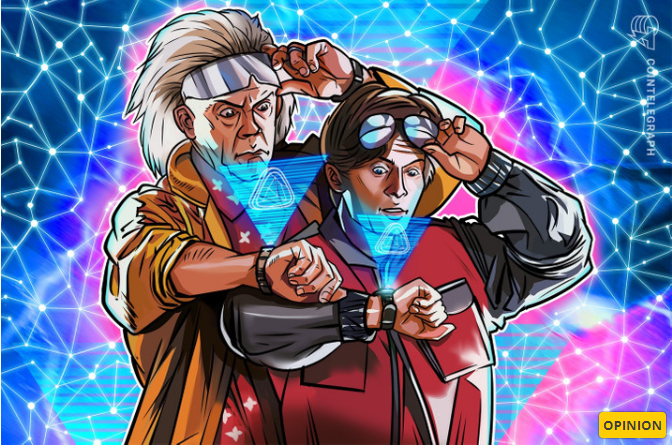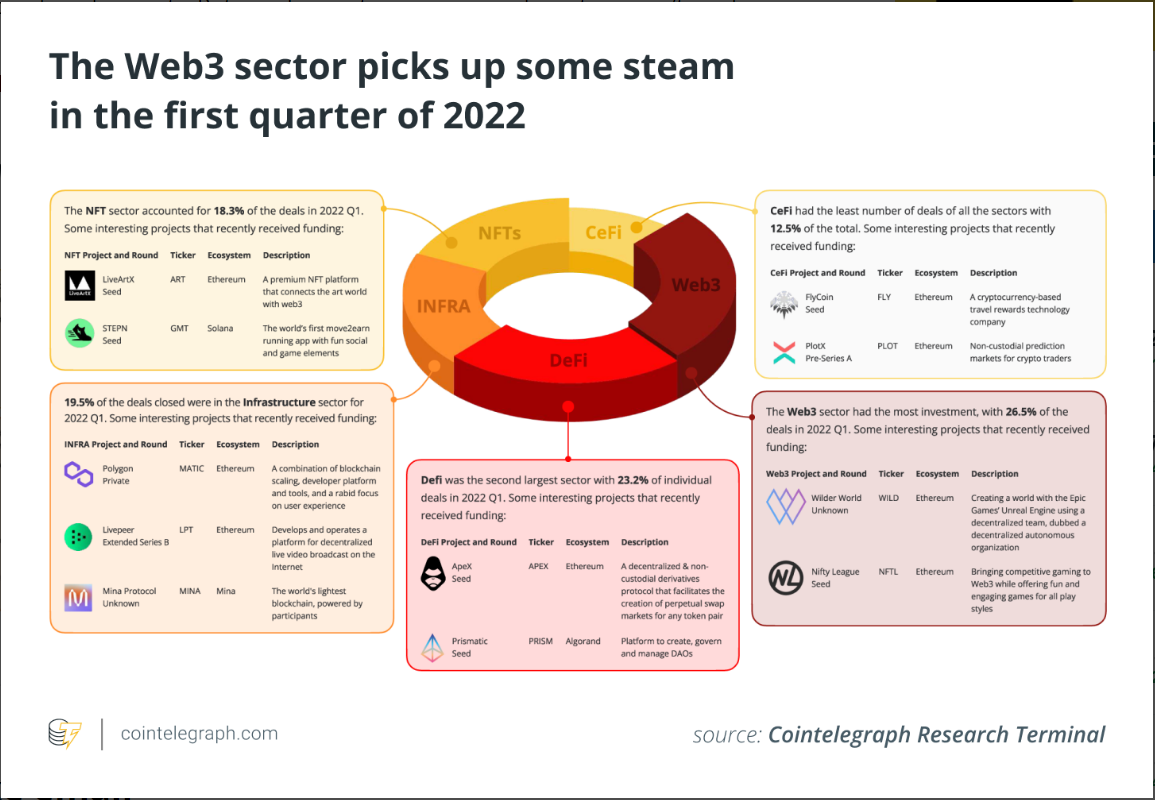
▲圖片標題(來源:cointelegraph)
Nonfungible tokens (NFTs) have been in the headlines for the past few years. While swaths of the population have tried to get their head around why NFTs exist, demand has soared, institutions have been built, and the lingo has entered our collective consciousness.
There is an elephant in the room, though: NFTs are difficult to use and a majority of them are digital snake oil. But these problems create the opportunity to provide answers. The accessibility and legitimacy of NFTs are both ripe for change. As funding pours into the space, the market is starting to mature, and that change is gaining momentum. We’re entering a new era of NFTs — NFT 2.0 — where the technology will be more easily accessible by the mainstream, and the underlying value proposition of the NFTs will be more transparent and reliable.
Reflecting on the rise of NFTs
In their short existence, NFTs have exploded onto the crypto scene, topping $17 billion in trading volume in 2021. This number is expected to balloon to $147 billion by 2026. Even more impressive is the fact that this volume is owned by fewer than 400,000 holders, which totals a whopping $47,000 transaction volume per user.
Alongside the industry’s meteoric rise, NFTs themselves have gone through enormous changes since their inception. For example, CryptoPunks, which minted for free in 2017, rose to blue-chip status, peaking with an $11.8-million sale at Sotheby’s last year. A few years later, Larva Labs, the company responsible for creating the Punks, was acquired by the Bored Ape Yacht Club’s parent company, Yuga Labs, for an undisclosed amount.
The evolution of NFTs
Dismissed as a fad early on, NFTs have shown a tremendous amount of staying power, attracting the attention of major celebrities and brands and even being featured in Super Bowl commercials. Companies such as Budweiser, McDonald’s and Adidas have dropped their own collections, while Nike has entered the space by acquiring RTFKT Studios.
While organizations determine their NFT strategy, the overall space has mirrored the past several decades of technological innovation, just under a significantly accelerated timeline. While the iPhone took about 10 years to reach its current version, NFTs have moved from 8-bit pixelated images and Pong-like blockchain games to high-fidelity 3D animations and complex play-to-earn game mechanics with massive multiplayer experiences in just a couple of years.
While the actual NFTs evolve, the ecosystem of pick-and-shovel solutions is also rapidly advancing. The onslaught of NFT minting platforms and toolings has dramatically reduced the barrier to entry, which has created deep saturation in the market. As of March 2022, there were more NFTs than there were public websites, creating a significant amount of noise that many have found difficult to cut through.
The staying power of the asset class and the gargantuan transaction volumes have shifted the ways that creators approach the space. Many have rushed their Web3 strategy or treated their fans as a source of liquidity, leaving a mess of missteps, rug pulls and abandoned projects. Put simply, most companies and creators aren’t ready to enter Web3, and they require more hand-holding and white-glove services than they do tools.
Just like email
Ultimately, NFTs appear to be heading the same way as email. There was a time in the 1990s when companies needed to hire specialists to code emails for them. Early adopters founded lucrative agencies that were able to service Fortune 500 companies and execute early digital strategies. The information gap gave these agencies tremendous leverage until technological advancement (and education) made it easier for brands to do it themselves.
Similarly, we are currently in the era where brands are looking to experts to educate and prepare them for a Web3 future, and it is only a matter of time before they fully disintermediate and manage their Web3 strategy fully in-house. Onboarding for NFTs, and crypto at large, is a fairly complex process that many simply cannot handle. Some companies, however, are finding ways to abstract the more difficult aspects of crypto and creating avenues for deeper engagement with their fans.

轉貼自: cointelegraph


留下你的回應
以訪客張貼回應